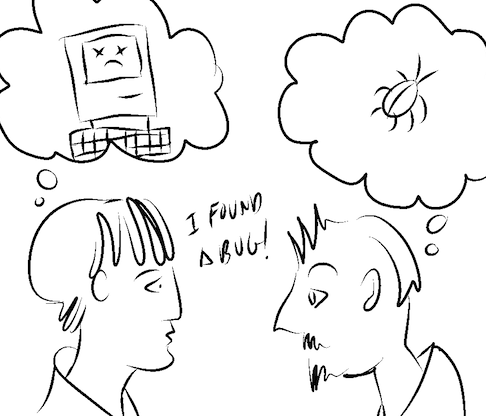
It’s not even funny how human networks and computer networks exhibit the same behaviors. I know we’re all patiently waiting for the singularity, for the event where computer networks become sentient and life as we know it changes forever. But given how the current example of networked sentient beings behave I fear that switching platforms (from organic to silicon) won’t improve anything. Collaborators will still compete, confuse, and confound each other, just at faster bit rates.
Dynamic network communication behavior is important to help us understand the 6th principle of the Agile Manifesto:
The most efficient and effective method of conveying information to and within a development team is face-to-face conversation.
At first glance the idea that F2F (face-to-face a type of peer-to-peer) communication is the most efficient and effective method of communication is non-obvious. After all, if I want to tell something to many people a broadcast is much quicker than a pointcast. Implicit in the idea of F2F communication is talking. (I doubt the framers of the Agile Principles want us to pass notes to each other.)
It’s not immediately clear that talking (realtime streaming) it is much more effective than detailed written instructions (store and forward). F2F communication means lots of clarifications, and repetitions when words and whole sentences can be lost due to network noise or an inattentive client.
The problem is that we are comparing F2F and written instructions in terms of abstract efficiency outside of the time-bound world we live in. This is a common error. We tend to think of our priorities and tasks as critters that live in independent time-space bubbles. Thus we don’t take into account logistics, dependencies, and elapsed time when estimating how effective or efficient a flavor of communication is.
There are not 24 hours in a work day. Really there are 4. The other 20 are taken up with sleeping, eating, commuting, and status meetings. That leaves 4 uninterrupted hours for work. Imagine if you baked this idea into your communications habit. You don’t have the time waste on writing or reading long, detailed emails and wiki posts. You need a communication strategy where you can cut to the important stuff. That means finding the right co-worker (peer) and talking to them directly.
A true co-worker is someone who knows you’re strengths and weaknesses, knows when you are joking, respects you, and doesn’t want to you see fail. Unfortunately, even if you have super social skills, you can only manage 5-7 relationships like those at a time, and most of these are with your family members. Most of the people you are working with either just don’t know you very well to be able to parse your text get the message without errors. You can’t simply write a detailed enough specification or requirements document to get though the noise.
Given the shortage of time and deep relationships you have to talk to co-workers F2F. You have to interrupt and be interrupted. What seems like a slow process, like a four hour F2F planning meeting, is actually much more efficient than a 100 page document.